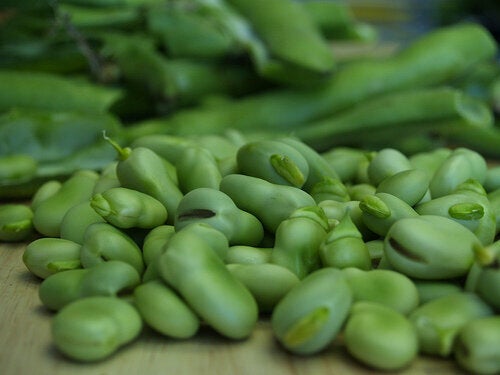
It all started when I was searching for a salad recipe for an upcoming party. I found a dish on Epicurious that called for asparagus, shaved pecornio, and fava beans. At the bottom of the recipe came a nonchalant, but startling note:
Be aware that fava beans can cause a potentially fatal food intolerance in some people of Mediterranean, African, and Pacific Rim descent.
Taken aback, I opted for another recipe. Yet I had to find out more about the potentially poisonous fava bean.
Fava beans appear innocent enough. Could they really be deadly?
Fava beans have a long history; they were the only bean eaten in Europe before the continent discovered the legumes in the so-called New World. High in fiber, they can be eaten raw or cooked and are especially popular during the summer.
But fava beans can cause hemolytic anemia -- an abnormal breakdown of red blood cells -- in people with an enzyme deficiency called Glucose-6-phosphate dehydrogenase (G6PD) deficiency. The dangerous reaction, known as Favism after the bean, typically occurs in people of Mediterranean, Southeast Asian, or African descent. Favism occurs more often in men than women, and is particularly dangerous to children. Though G6PD deficiency is the most common human enzyme deficiency, with nearly 400 million people affected, the negative reactions to fava beans are relatively rare.
Fascinated, I dug deeper into the consumption of potentially poisonous foods. I found that people frequently eat foods that, if eaten incorrectly, could prove dangerous.
Caribbean cuisine relies on many such foods as staples. The ackee, a fruit brought to the Caribbean from West Africa during the slave trade, is only edible when it is exactly ripe.
Underripe or overripe ackee causes a reaction known as Jamaica poisoning, which can be fatal. Despite the dangers, many in the Caribbean eat the fresh fruit on a regular basis. Canned ackee is available in parts of the US, but it is illegal to import the fresh fruit.
Cassava (also known as manioc or yuca, among other names) originated in South America, but most of the shrubs are now cultivated in Africa. The roots of the cassava plant are eaten around the world, and the flour made from cassava is used for tapioca.
In much of Africa, cassava is the primary staple food. It is also popular in the Caribbean. The leaves of the plant are always poisonous, but the presence of cyanide in the roots depends on cultivation. So-called sweet cassava roots are edible simply after cooking, but bitter cassava contains more cyanide and therefore requires more processing.
Frequently, the roots are peeled, ground into flour, and soaked in water for several days. During the soaking the flour is squeezed dry several times and then toasted. Another method, common in Nigeria and some other West African countries, is to grate the roots and then lightly fry the shreds in palm oil. The roots may also be boiled for a long period of time or fermented.
Even the most common foods are not necessarily safe. Too much nutmeg can make people ill. Last year, four people overdosed on nutmeg after a Swedish food magazine misrepresented the amount needed for a recipe. As a result, the magazine recalled ten thousand copies of that issue. The green parts of potato, rhubarb, and tomato plants are also poisonous (and cooking does not help). Cherry pits release prussic acid (hydrogen cyanide) when chewed or crushed. Apple seeds have a similar poison, but in much smaller doses, so one would have to consume many seeds to have an adverse reaction.
All of this merely emphasizes how creative humans have been in the cultivation and cooking of food. In their quest for sustenance and taste, they have not been deterred by the potential hazards. Thanks to their experiments, we can enjoy potatoes, cherries, and tapioca pudding. And with these foods, one can be confident in their safety. But I think I'll exercise a little more caution before serving fava beans at my next dinner party.